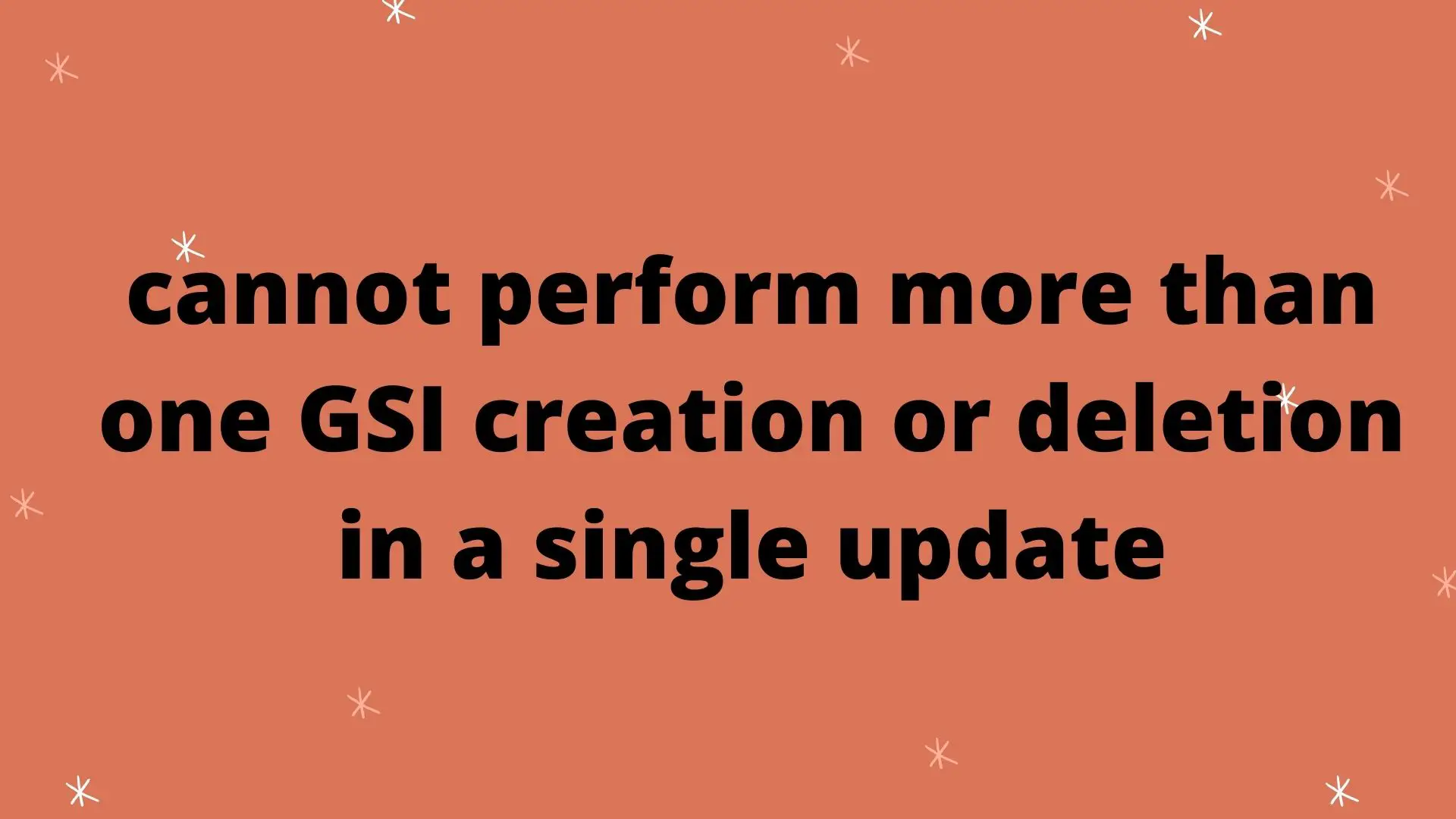Error Message :
cannot perform more than one GSI creation or deletion in a single update
Problem:
I was trying to add multiple GSI on an existing table using CloudFormation updatestack.
Initially, I created a DynamoDB table with two GSI Location-index and Department-index. After few days of initial table creation, I needed to add two more index on my table.
- JobTitle-index
- ProjectId-index
Therefore, I updated my DynamoDB template like below and tried to update my existing CloudFormation stack
AWSTemplateFormatVersion: 2010-09-09
Description: AWS CloudFormation Template To Create a DynamoDB With GSI
Resources:
EmployeeTable:
Type: AWS::DynamoDB::Table
Properties:
TableName: Employee
AttributeDefinitions:
-
AttributeName: EmployeeId
AttributeType: S
-
AttributeName: LocationId
AttributeType: S
-
AttributeName: DepartmentId
AttributeType: S
-
AttributeName: JobTitle
AttributeType: S
-
AttributeName: ProjectId
AttributeType: S
KeySchema:
-
AttributeName: EmployeeId
KeyType: HASH
GlobalSecondaryIndexes:
-
IndexName: Location-index
KeySchema:
-
AttributeName: LocationId
KeyType: HASH
Projection:
ProjectionType: ALL
-
IndexName: Department-index
KeySchema:
-
AttributeName: DepartmentId
KeyType: HASH
Projection:
ProjectionType: ALL
-
IndexName: JobTitle-index
KeySchema:
-
AttributeName: LocationId
KeyType: HASH
Projection:
ProjectionType: ALL
-
IndexName: ProjectId-index
KeySchema:
-
AttributeName: DepartmentId
KeyType: HASH
Projection:
ProjectionType: ALL
BillingMode: PAY_PER_REQUEST
Outputs:
Employee:
Description: Table Created using this template.
Value: !Ref EmployeeTableMy Stack Update Failed With Below Error !!!
cannot perform more than one GSI creation or deletion in a single update
Why?
I was trying to find why to above problem. Little bit of research on the same took me to conclusion that, CloudFormation doesn’t allow you add or delete more then one GSI in a single update.
Note: Please note that, you can create a table with more then one GSI at a time when you initially create your stack. Only during update operation this is not allowed.
Suggested Read: Create a DynamoDB table with Global Secondary Index using CloudFormation
What do we do then?
Solution:
Well, the solution or to be honest the workaround is really simple.
- Add one GSI and trigger the update on your stack.
- After successful updation, check DynamoDB table to see if added index is created and is in active state.
- Then add or remove another index and do another deployment.
Or If you know all the index you need to add at the time of table creation
- Add all of them and create your stack as create stack allows more then one GSI addition.
Basically, you need to break your deployment into steps so that in each deployment you are doing a single addition or deletion of Global Secondary Index during stack update operation.
Enjoyed the content?
Subscribe to our newsletter below to get awesome AWS learning materials delivered straight to your inbox.
Don’t forget to motivate me by-
- Adding a comment below on what you liked and what can be improved.
- Follow us on
- Share this post with your friends
Suggested Read:
- Create a DynamoDB table using CloudFormation
- 5 Ways to Create and Manage your AWS Resources
- AWS S3 Storage Classes: Everything you need to know
- How to Create an EC2 instance in an existing VPC using CloudFormation
- Attach an IAM role to an EC2 instance using CloudFormation
- How to create an S3 bucket using CloudFormation
- Understand IAM PassRole to Secure Your AWS Infrastructure
- Understand IAM PassRole to Secure your AWS Infrastructure
- Serverless Services on AWS with Explanation

